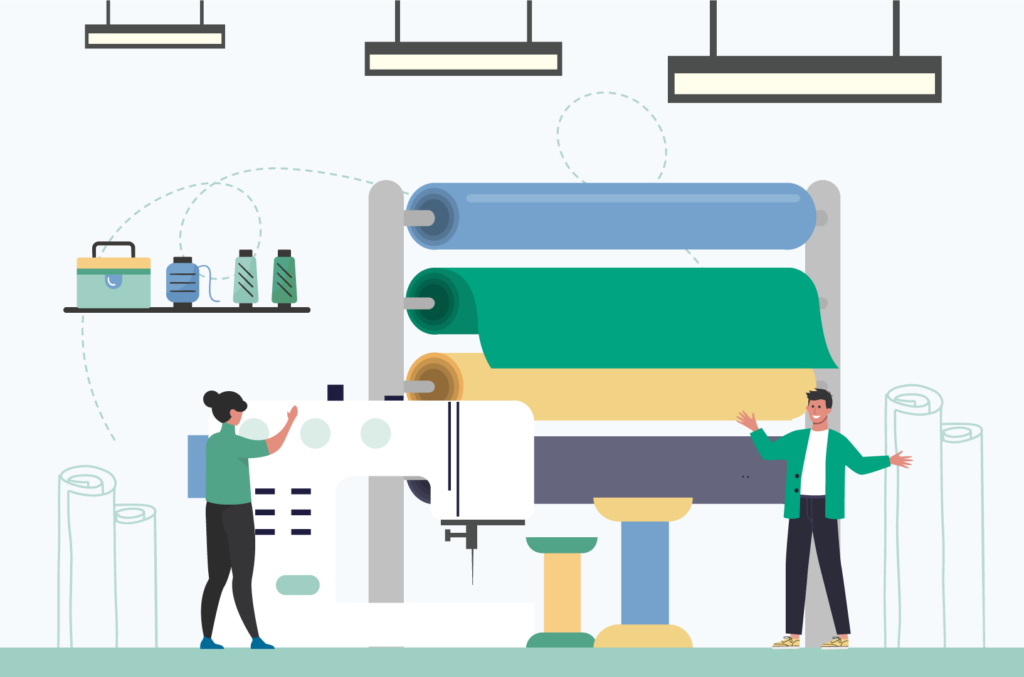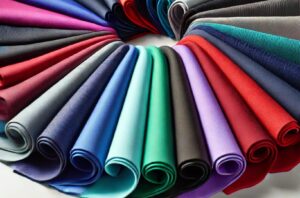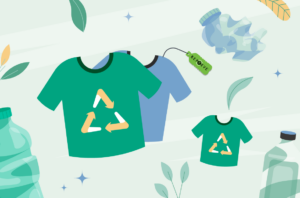What are Sustainable Fabric Materials?
Sustainable fabric materials are made with a focus on reducing environmental harm and promoting ethical practices. By choosing these fabrics, your brand can reduce its carbon footprint, use fewer resources, and support fair working conditions.
Going green with sustainable fabrics not only helps the planet but can also appeal to eco-conscious consumers and set your brand apart in today’s competitive market. Adopting such fabrics is a forward-thinking move that aligns with the growing demand for responsible fashion.
Let’s look at 14 sustainable fabric materials that can help your brand accomplish its goals.
Top 14 Sustainable Fabric Materials
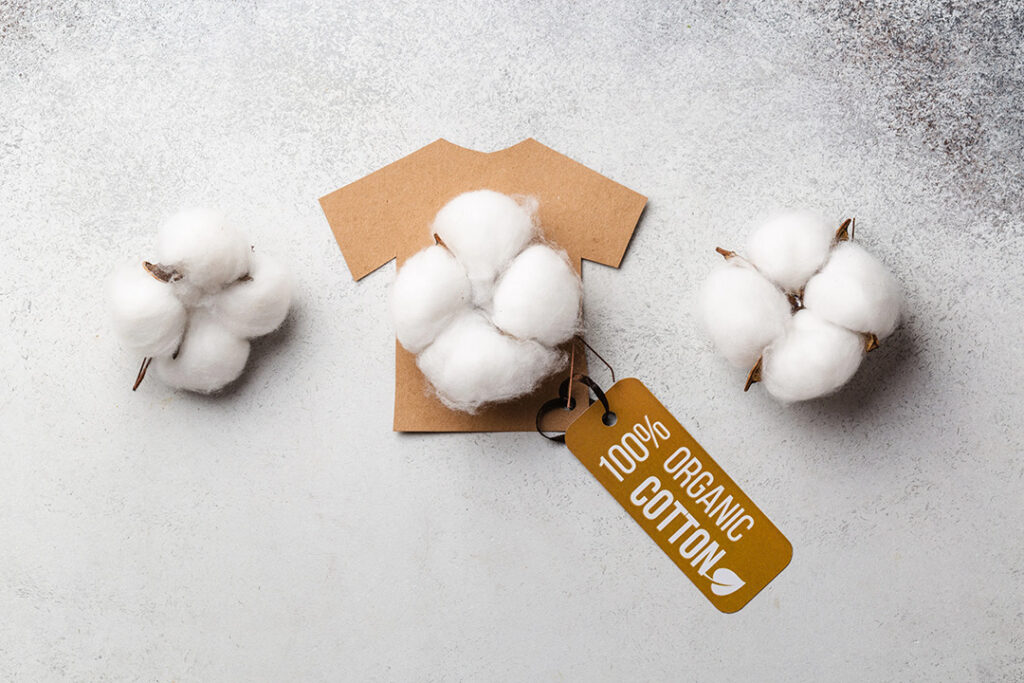
1. Organic Cotton Fabric
This is cotton grown without the use of pesticides, synthetic fertilizers, or genetically modified organisms. Organic cotton farming promotes and enhances biodiversity and biological cycles.
- T-shirts, dresses, underwear, and sleepwear.
- Denim jeans and jackets.
- Socks, hats, and other accessories.
Brands: Patagonia, Eileen Fisher, prAna, People Tree.
Suppliers: Texas Organic Cotton Marketing Cooperative, SEKEM.
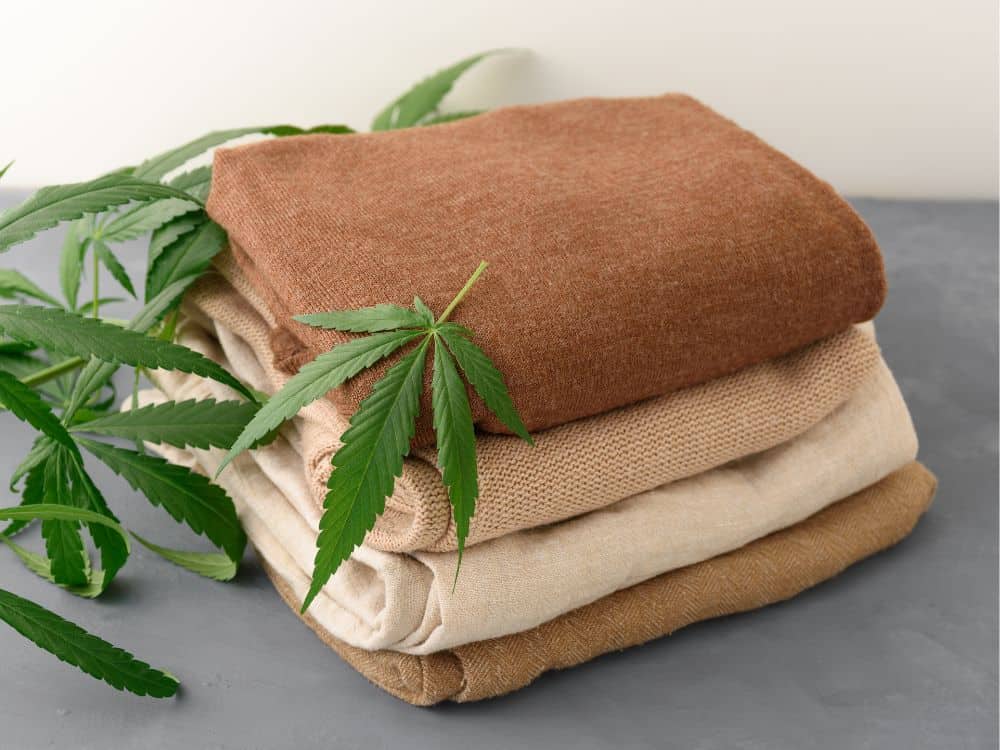
2. Hemp Fabric
A resilient plant that requires minimal pesticides and water. Hemp fibers can be used to create a durable, breathable sustainable fabric materials that is biodegradable.
- Casual clothing like shirts, pants, and dresses.
- Denim alternatives.
- Bags and backpacks.
Brands: Patagonia, Jungmaven, HempAge.
Suppliers: Hemp Traders, Hemp Fortex.
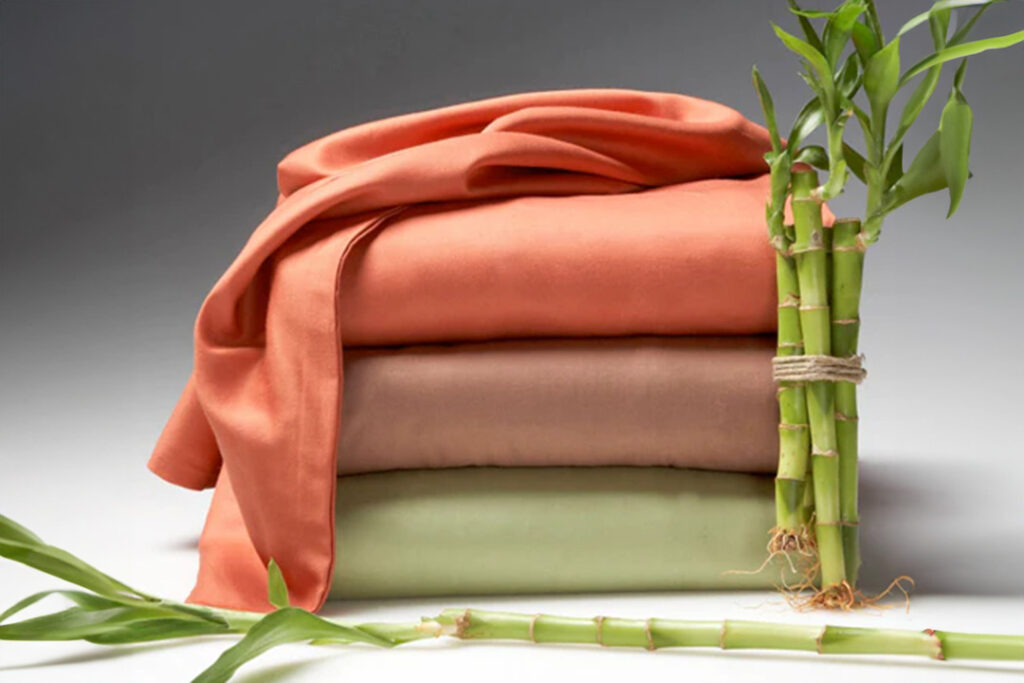
3. Bamboo Fabric
Grows rapidly without the need for pesticides or fertilizers. It’s soft, breathable, and possesses natural antibacterial qualities. However, the process to turn bamboo into fabric can sometimes involve chemicals, so it’s important to ensure it’s processed in an eco-friendly manner.
- Underwear, socks, and tees due to its softness and antibacterial properties.
- Active and sleepwear because of its moisture-wicking qualities.
Brands: Cariloha, Boody, Bamigo.
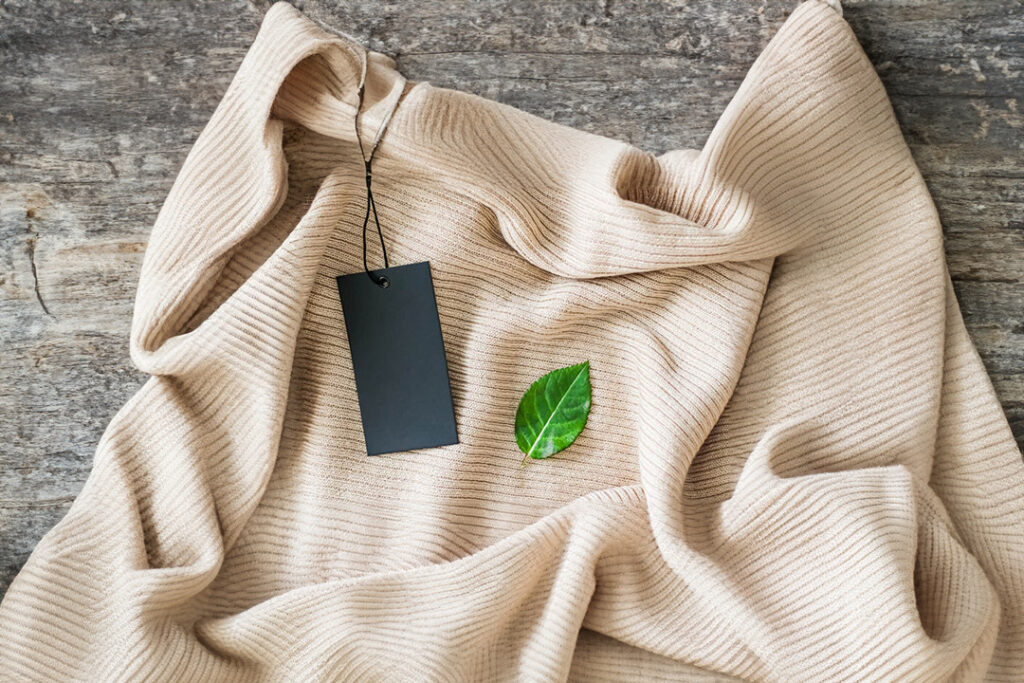
4. Tencel/Lyocell Fabric
Derived from the wood pulp of trees (often eucalyptus, spruce, or beech), it’s biodegradable and produced in a closed-loop system where almost all solvents and chemicals are recycled.
- Soft and drapable garments like dresses, blouses, and pants.
- Bedding and linens.
- Active wear due to moisture-wicking properties.
Brands: Eileen Fisher, Patagonia, Reformation.
Suppliers: Lenzing AG (they manufacture Tencel).
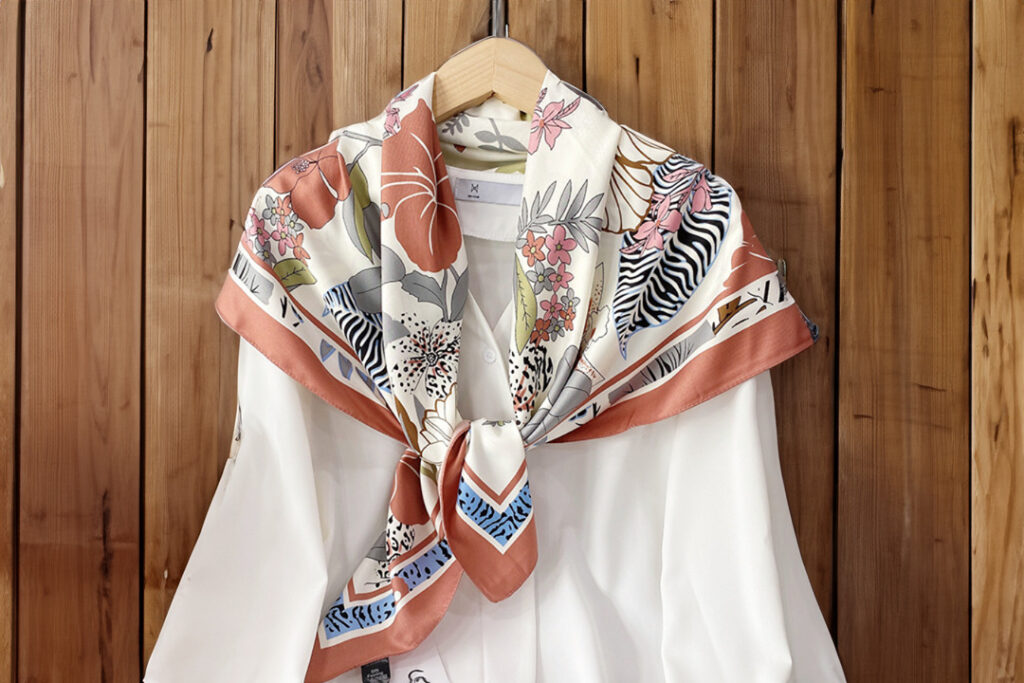
5. Silk Fabric (including Peace Silk)
While traditional silk production involves killing the silkworms, “peace silk” or “Ahimsa silk” allows the silkworm to complete its lifecycle. This makes it a more humane and sustainable option.
- Luxury garments like dresses, blouses, and lingerie.
- Scarves and ties.
- Bedding and pillowcases.
Brands: Cuyana, Amour Vert.
Suppliers: Seidentraum, East & Silk.
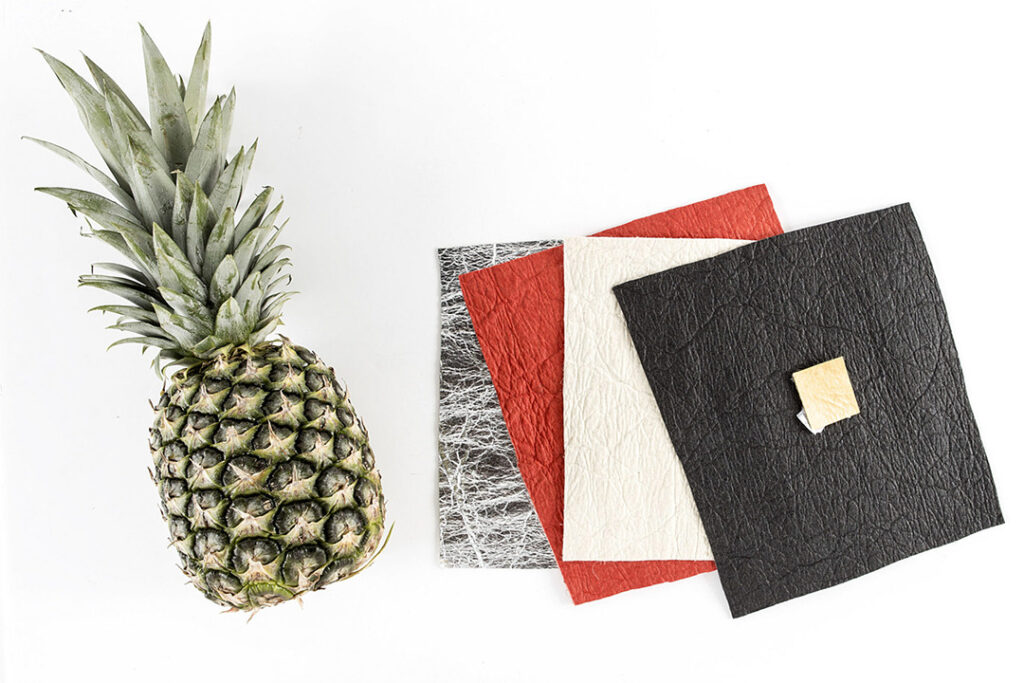
6. Piñatex Fabric
Made from the fibers of pineapple leaves, which are usually discarded after the fruit is harvested. It’s a sustainable alternative to leather and petroleum-based textiles.
- Vegan leather alternatives for jackets, shoes, and bags.
- Accessories like belts and watch straps.
Brands: Hugo Boss, NAE Vegan, Po-Zu.
Suppliers: Ananas Anam (they developed Piñatex).
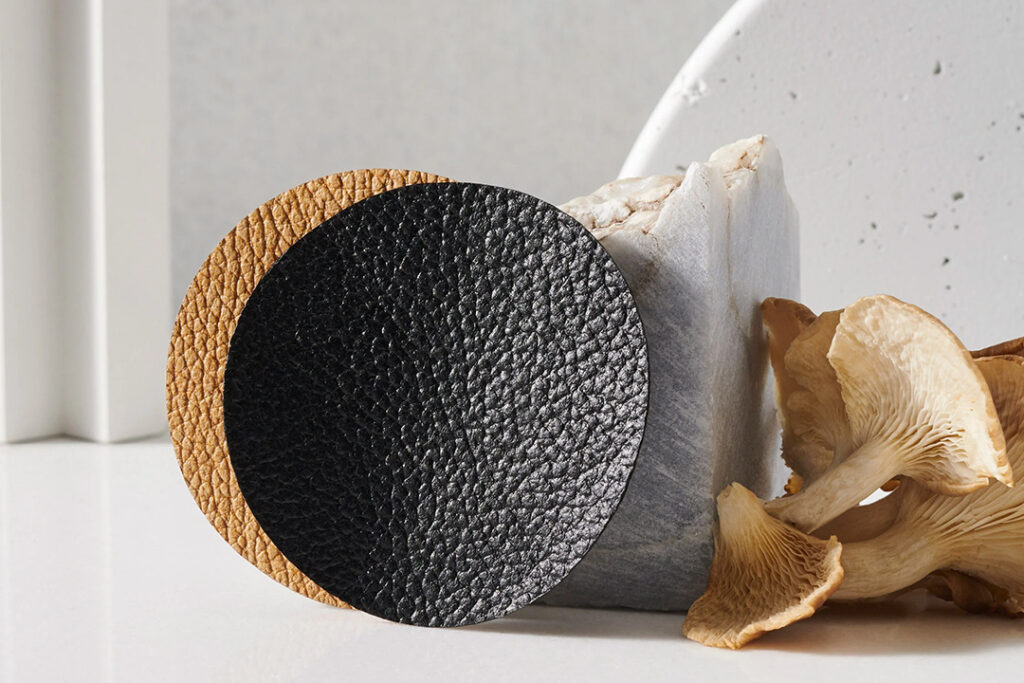
7. Mushroom Leather Fabric (Mylo™)
Derived from mycelium (mushroom roots), it’s biodegradable and can be a sustainable fabric materials alternative to leather.
- Luxury fashion items as a leather substitute.
- Accessories like bags, shoes, and wallets.
Brands: Stella McCartney, Bolt Threads.
Suppliers: Bolt Threads (they developed Mylo).

8. Wool Fabric
Look for ethical and sustainable sources like organic wool or non-mulesed wool. Wool is natural, biodegradable, and renewable.
- Sweaters, cardigans, and coats.
- Suits and tailored garments.
- Scarves, hats, and mittens.
Brands: Icebreaker, Smartwool, Ibex.
Suppliers: ZQ Merino, Diyang Merino Textile Ltd.
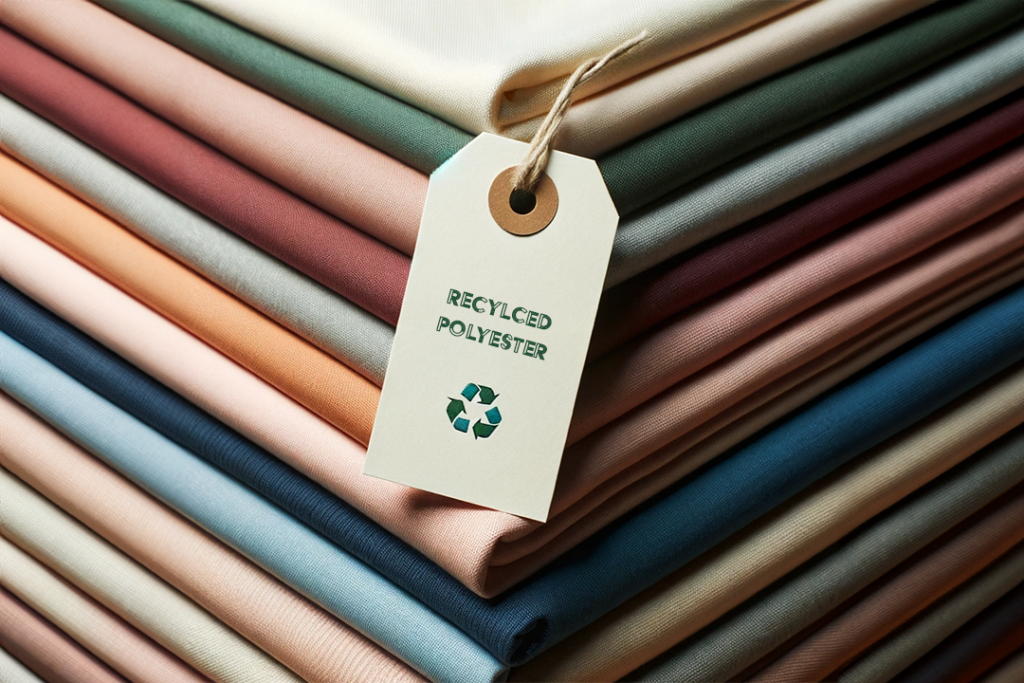
9. Recycled Polyester Fabric
This includes sustainable fabric materials made from recycled PET bottles, discarded textiles, or even ocean plastics. Recycling helps reduce the need for virgin materials and diverts waste from landfills.
- Active wear, especially when made from recycled PET.
- Jackets and outerwear.
- Swimwear made from recycled ocean plastics.
Brands: Patagonia (known for using recycled polyester), Girlfriend Collective, Adidas (for shoes made from ocean plastic).
Suppliers: Unifi (Repreve recycled fibers), Teijin (Eco Circle).
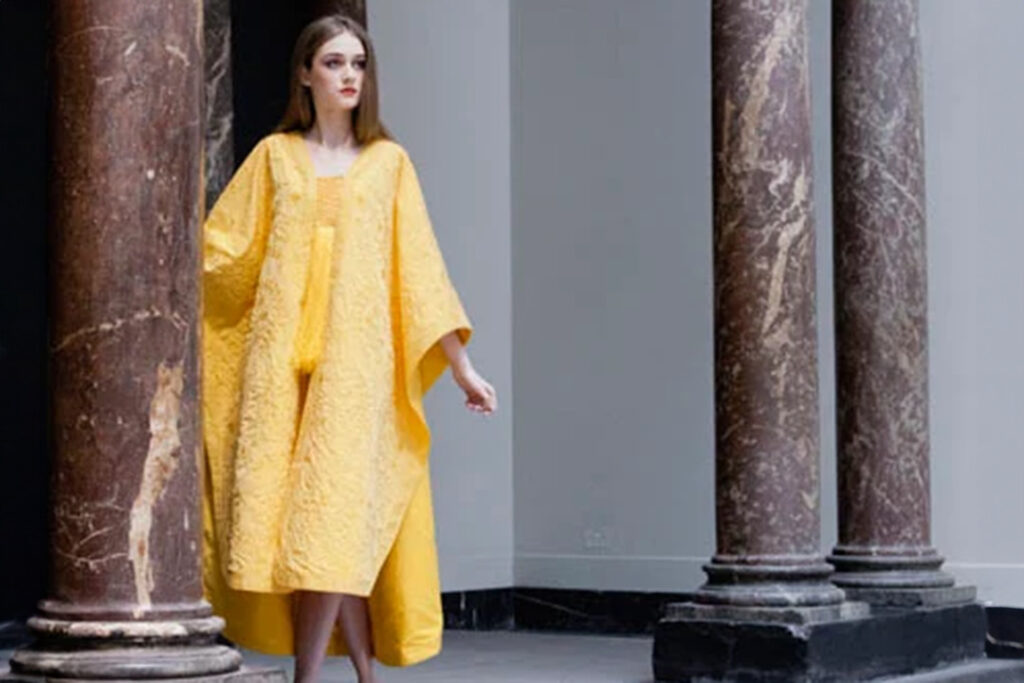
10. Spider Silk Fabric
Bioengineered spider silk is a lightweight, strong, and biodegradable material. While real spiders aren’t scalable for production, scientists have developed ways to produce this silk using bacteria, yeast, or other microorganisms.
- Lightweight, strong garments like outerwear.
- Possibly for specialized sportswear due to its strength-to-weight ratio.
Brands: Stella McCartney collaborated with Bolt Threads.
Suppliers: Bolt Threads, Spiber.
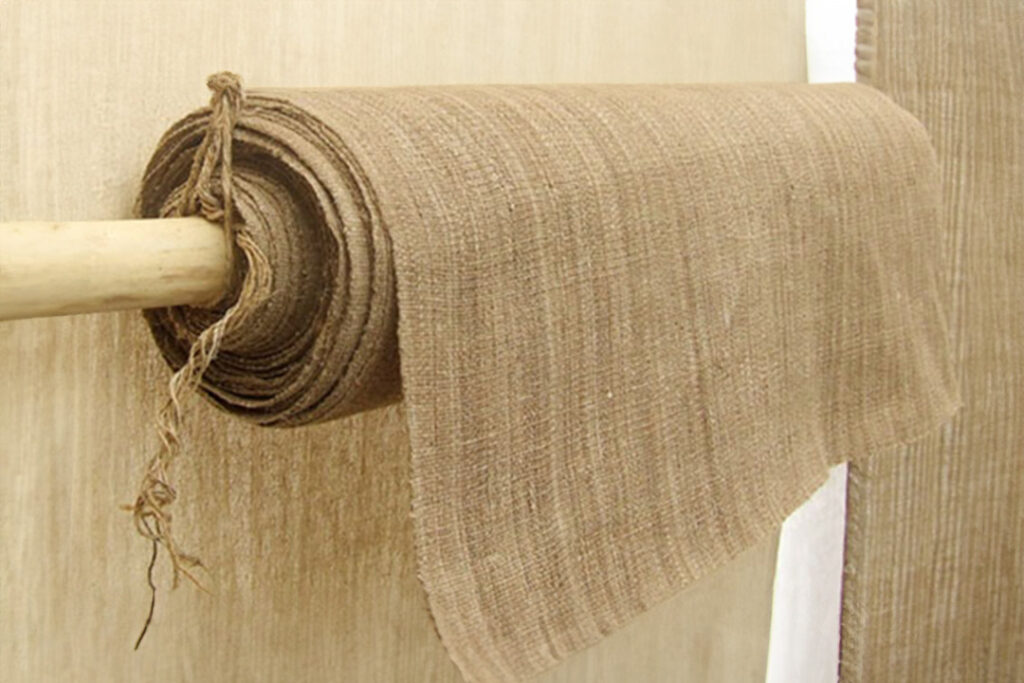
11. Nettle Fabric
Stinging nettles have been used historically in textiles, and when cultivated for fabric, they require less water and no pesticides.
- Rustic shirts and pants.
- Bags and other textile accessories.
Brands: Ortovox, Himalayan Wild Fibers.
Suppliers: Himalayan Wild Fibers.
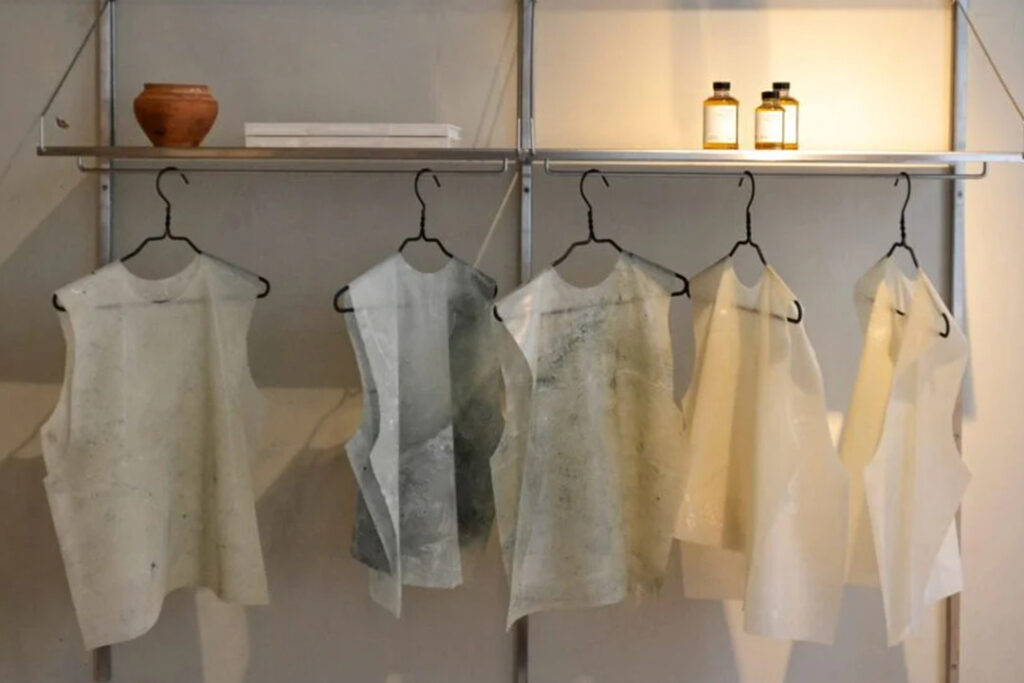
12. Algae-Based Textiles Fabric
Derived from algae biomass, these textiles are sustainable fabric materials and can have a reduced carbon footprint.
- Footwear, especially insoles due to its cushioning properties.
- Active wear and casual clothing.
Brands: Vivobarefoot, Bloom Foam.
Suppliers: Keel Labs.
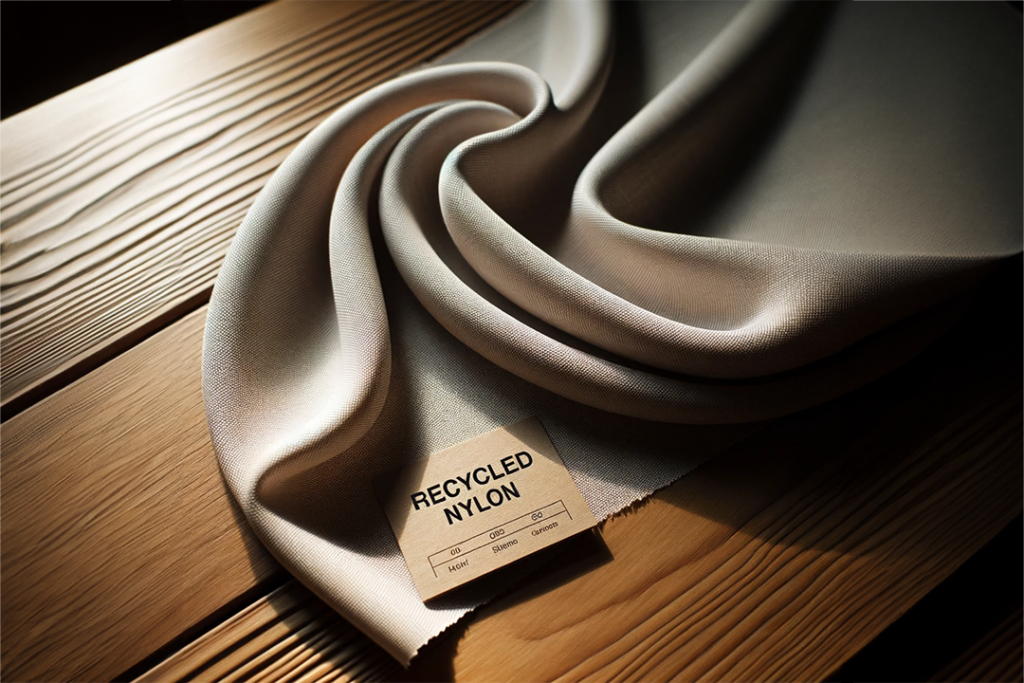
13. Recycled Nylon Fabric
This is made by repurposing nylon waste, such as fishing nets from oceans, into usable sustainable fabric materials.
- Swimwear and activewear.
- Outerwear like jackets and raincoats.
Suppliers: Aquafil (ECONYL).
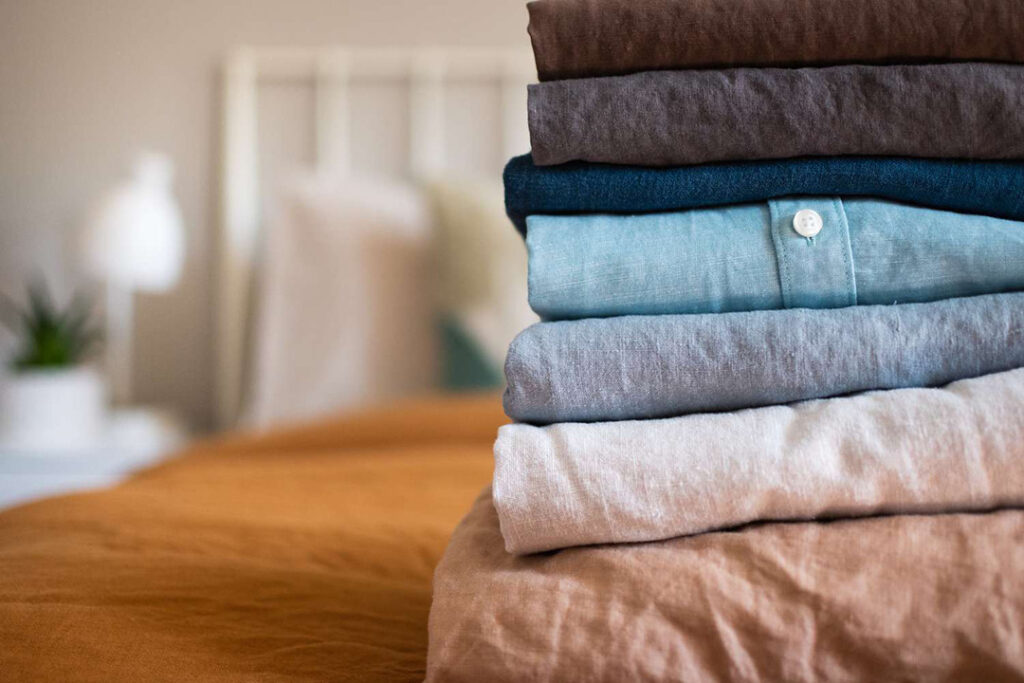
14. Linen Fabric
Made from the flax plant, linen is biodegradable and requires fewer pesticides and water than cotton. It’s also durable and breathable.
- Summer clothing like dresses, shorts, and shirts due to its breathability.
- Blazers and suits for a relaxed look.
- Home textiles like tablecloths and napkins.
Brands: Flax London, Eileen Fisher, Elizabeth Suzann.
Suppliers: Baird McNutt, SAFILIN.
Pros of Sustainable Fabric Materials
Using sustainable fabric materials offers various benefits to the environment, society, and businesses.
1. Environmental Benefits
Reduced Pollution: Sustainable fabrics often result in fewer chemicals, pesticides, and synthetic inputs, leading to less soil, air, and water pollution.
Conservation of Resources: Sustainable fabric materials can conserve vital resources such as water and energy.
Waste Reduction: Using recycled fabrics or materials reduces landfill waste.
2. Social and Ethical Benefits
Healthier Work Environments: Sustainable fabric production often involves safer, non-toxic processes, which can be better for workers’ health.
Supports Fair Labor: Many sustainable brands emphasize fair labor practices and improved working conditions.
3. Business Benefits
Market Differentiation: Brands that prioritize sustainability can differentiate themselves in a crowded market.
Meet Consumer Demand: There’s growing consumer awareness and demand for sustainable products.
Risk Mitigation: Companies that source sustainable fabric materials may face fewer supply chain disruptions due to environmental or social crises.
4. Durability
Some sustainable fabrics, like hemp, are inherently more durable, meaning products may last longer, reducing the need for frequent replacements.
5. Biodegradability
Many sustainable fabrics are biodegradable, reducing long-term environmental impact.
Cons of Sustainable Fabric Materials
While sustainable fabrics present numerous advantages for the environment and society, they also come with their own set of challenges.
1. Cost
Higher Initial Costs: Sustainable fabrics can be more expensive to produce or purchase due to the costs associated with organic farming, ethical labor, or innovative technologies.
Scaling Challenges: Transitioning to sustainable sources might involve substantial initial investments.
2. Limited Availability
Niche Market: Some sustainable fabrics are not as widely available, which can limit options for designers or manufacturers.
Supply Chain Complexity: Ensuring the entire supply chain is sustainable can be complex and challenging.
3. Consumer Misunderstanding
Greenwashing Concerns: The rise in demand for sustainable products has led to “greenwashing,” where brands falsely claim their products are sustainable.
Educational Gap: Brands might need to educate consumers about the value and care for sustainable fabrics, which can require additional resources.
4. Performance Variability
Some sustainable fabric materials might have different performance characteristics (e.g., dye uptake, feel) than conventional fabrics, which can be a challenge for certain applications.
5. Durability Concerns
While some sustainable fabrics are more durable, others (like some biodegradable materials) might have a shorter lifespan, which could be viewed as a disadvantage for specific applications.
6. Technological Challenges
For newer, innovative materials, there can be challenges related to scaling production, achieving consistent quality, or integrating them into existing manufacturing processes.
Conclusion
In conclusion, while sustainable fabric materials have multiple benefits, they come with challenges that need to be addressed. Balancing the pros and cons, many brands and manufacturers believe that the long-term benefits of transitioning to sustainable fabrics outweigh the downsides, especially considering the growing consumer demand and the pressing need to address environmental and ethical concerns in the fashion industry.
Sphere Sport is an apparel manufacturer that specializes in sustainable fabric materials for sportswear. We stock Repreve recycled fabric and often source sustainable fabrics for our clients.
Contact us today to see how we can help your brand create sustainable apparel and eco-friendly packaging!

